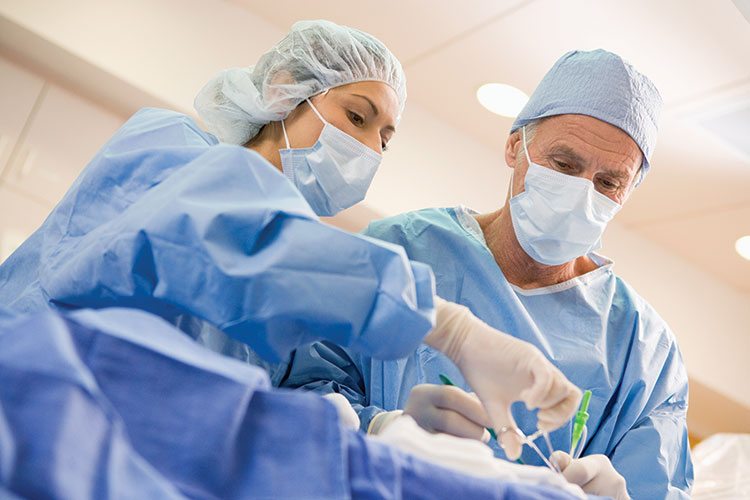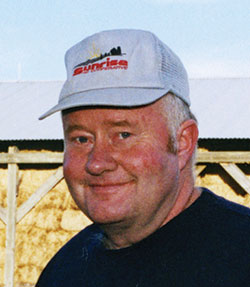
The bills were pouring in. From the hospital, I received a bill for over $92,000, the anesthesiologist charged $7,000, radiology came next and was almost that high. I still hadn’t received the bill from the surgeon.
What an experience I had been through. At least the medical providers waited awhile to send the bills out (some medical facilities don’t), and at least I was in good enough shape to write some checks — and thank God for health insurance — or the farm would have been gone.
I had just been through open heart surgery to replace an aortic valve that was malfunctioning. The medical term for this is severe stenosis. Years before, I had contracted rheumatic fever in my childhood and was in a hospital for two weeks. That is what probably caused the valve to malfunction.
I had known about the malfunction for about a decade, and my doctors could easily pick up a heart murmur any time they listened to me. During this decade, I had switched from my regular physician when he changed careers to an internal medicine specialist whom I was comfortable working with. I think aging dairy farmers would be wise to investigate working with an internal medicine specialist. Their emphasis is on prevention and treatment of diseases that affect adults.
My internal medicine doctor started watching my heart, and at first, every two years we did an echocardiogram to see how things were progressing . . . then as the heart got poorer, the interval shortened to every year. Finally, when things were getting worse, we checked at six months and it was then time to intervene with heart surgery.
The logistics of heart surgery for dairy farmers are somewhat different than ordinary people. Since dairymen run a business that is pretty much functional day or night, finding time to squeeze a heart surgery in poses a problem.
In open heart surgery, the sternum is cut in two and you are pulled open wide enough so the surgeons can get to your heart. There are many nerves that run across this section of your body and they also are severed.
Six weeks after heart surgery you can lift about 20 pounds, but your sternum still isn’t healed, and about the only thing you can safely do is office work, or supervisory type tasks, or maybe running after parts. Working around animals is far too risky at that point because they are unpredictable. Figure that it takes about three months before you are fully ready to be back in action.
Three months is a big chunk of time. So, unless you have employees or dedicated family members, it is almost impossible to pull this type of surgery off without shutting down temporarily. In my case, it was an intervention and not an emergency. Therefore, I was able to plan the best time for having surgery.
Starting down the path
Heart surgery is a journey. The first part of my journey started with an angiogram in mid-December. Echocardiograms can only tell you so much, and my cardiologist said we needed more information, thus the need for an angiogram.
The angiogram is a procedure in which a catheter is inserted into a blood vessel and threaded to your heart or coronary arteries. Special dyes are injected in your blood and they are x-rayed from many angles to measure flow and blockage. The information helps the heart surgeon plan for your surgery. What we found out from the angiogram was that the rest of my heart was fine. I would not need bypass surgery.
The angiogram put me out of commission for a little while, but it was nothing like open heart surgery. From a financial standpoint, having an angiogram in December instead of combining it the next year with the heart surgery was a bad idea. Combining the procedures in the same year would have limited the out-of-pocket expenses I ended up paying for. On the other hand, the wounds from the angiogram were healed by the time I had the actual heart surgery, and it made my recovery easier.
Choices to make

There are two options. You can elect to get a tissue valve (made from swine or cattle) or a mechanical valve. If all goes well, the mechanical valve should outlast the patient. My mother had a mechanical valve and it lasted 28 years and never failed.
The only problem with mechanical valves is you need to be on a blood thinner such as Coumadin. If you are on Coumadin, you need to have your blood checked about once a month to see how it is clotting, and if things are bad, you might be running to the clinics for a checkup two or more times a week until things straighten out. Coumadin reacts with many foods, such as cranberries, so you have to be careful what you eat, and it also reacts with medications, including antibiotics, again necessitating many more checkups.
The final drawback to Coumadin in our occupation is the very real possibility we will get kicked by a cow or hurt in some other way (including falls), which might trigger internal bleeding and cause death.
With tissue valves, you don’t have to take blood thinners and can just get by with a baby aspirin. The tissue valves have one big drawback though, that being that they don’t last forever. After thinking everything through, I decided to opt for a tissue valve. At my age, I might have to have it replaced again.
Now, who would want to go through open heart surgery a second time? I know I wouldn’t. Part of my calculation in opting for a tissue valve is that there is another new technique of minimally invasive surgery to replace the valve on an older at-risk patient. It is called TAVR, Transcatheter Aortic Valve Replacement.
Like the angiogram, this surgery gains access to your heart through your groin. In TAVR, a specially sized valve is placed over a balloon. Once the valve is in position, the balloon is inflated and it unfolds the valve. Unlike open heart surgery, this new valve is not stitched in place and the old valve is not removed. The new valve just sits there wedged in place.
So far, the outcomes on this procedure have been very good . . . but, unfortunately, surgeons have only been doing it for five years, so there are no long-term studies. I am hoping if I should need a replacement valve in the future, the doctors will have everything figured out by then.
With my surgery date at hand, I used the few remaining days I had to make preparations on the farm for my absence. I lined up my employees with as much useful information as I could give them and tried to prepare them for almost every contingency, including the possibility that I wouldn’t survive. With that in mind, I also updated my will.
On a more practical level of planning, I made sure I had ample supplies of food and my own prescription drugs on hand, so that when I returned home I could just rest for several weeks. You don’t want to be circulating out in the public after heart surgery unless absolutely necessary. You need to avoid viruses and bacterial infections. That’s another reason the hospital wants to send you home as soon as possible. Since I didn’t have any relatives living close by, I had to arrange for a ride to take me to the hospital some 60 miles away.
The big day
The doctors advised getting a good night’s sleep before surgery. It is very important for your recovery. With that in mind, the plan was to have me arrive at the hospital the day before surgery to get all the necessary tests done. The night before surgery they made me shower with an antibacterial scrub solution. The following morning I was awakened at 5 o’clock so they could shave my hair in preparation for surgery and have me take another shower with that surgical scrub solution.
At a little after 6 o’clock, I was wheeled down to the pre-surgery room where a hot air mattress was inflated over my body. Studies show this improves outcomes. I talked to the anesthesiologist for a short time and then was wheeled into the surgery room. I saw the bright lights above me, and that was the last I remembered before coming to.
My sister and friends told me I was on a heart-lung machine for two hours, and then I was left open another half hour to make sure my heart was beating right. After that, I was sewed up and wheeled into an intensive care room.
When I awoke, I discovered that my body was vastly different than before. Aside from the excruciating pain in my chest, there were two hoses coming out of my abdominal area below the heart, which were in place to suck out bodily fluids. My chest had what looked like two fishing lines protruding from it. This was in case I needed a temporary pacemaker. One in 50 heart patients end up needing a pacemaker. There was also a tube down my neck called a central line. If the heart acted up, they could inject drugs directly into the heart through this line.
It wasn’t long before I was moved out of intensive care into a recovery room. One of the first things they make you do is walk. The goal was to take short walks four times a day, so I would stroll down the halls with a nurse at my side to make sure I didn’t fall, and each day I went further and further.
Another goal was to get the lungs going again. Lungs pretty much deflate after the surgery and you don’t have much capacity. Using a device known as an incentive spirometer, the nurses encouraged me to inhale and see how far a plunger would travel up a tube. Before surgery, we marked the device with a magic marker line. After surgery, I was only able to bring the plunger to 20 percent of my previous volume. The nurses wanted me to use it multiple times a day, and it really did help improve my lung capacity.
I was in the hospital a total of five days, which is a typical stay. By the end of the third day, all the tubes, the central line, and the pacemaker wires had been removed. The anesthesia had paralyzed my digestive system and it took awhile to get eating again, but once that kicked in gear I was making steady improvement.
It was time to go home. My blood was checked, and I was low on potassium, so I had to stay a little longer while those levels were brought up. After getting some prescription drugs and painkillers from the hospital pharmacy, and a list of instructions on how to take care of the wounds, my ride home arrived and the first part of my journey was complete. The second part, rehabilitation, would soon begin, and it would prove to be almost as important as the first.
If you are planning on heart surgery, it is important that you go to a facility that specializes in these operations. The surgical center I went to is rated in the top 50 in the United States for good outcomes. For your own safety and the protection of your farm, do some research before committing to such an important procedure.







